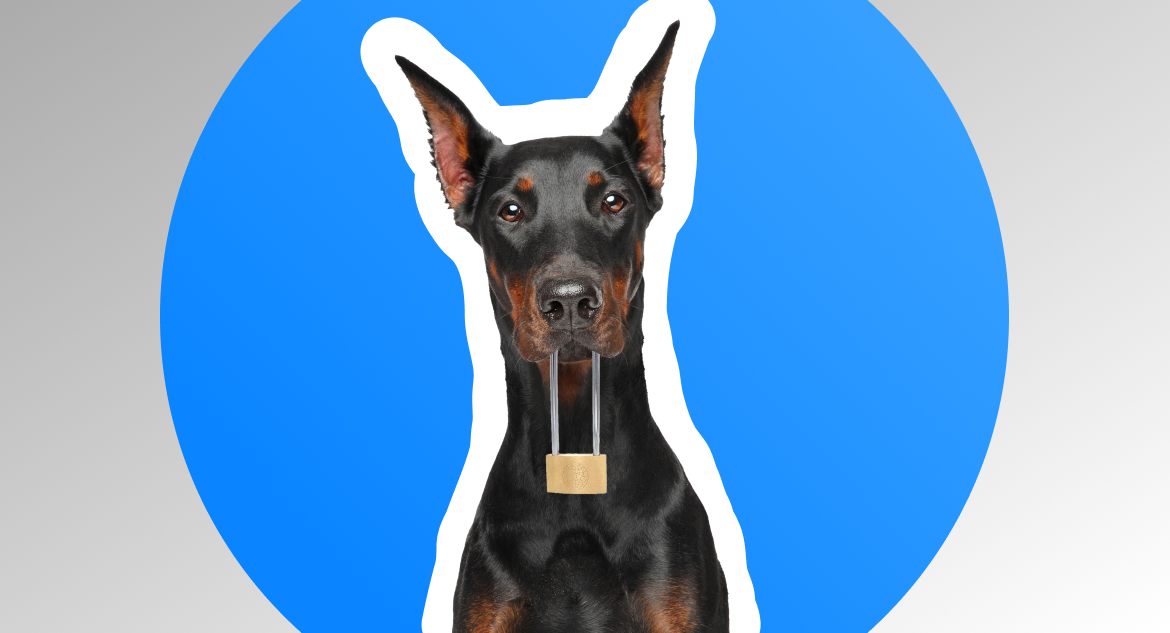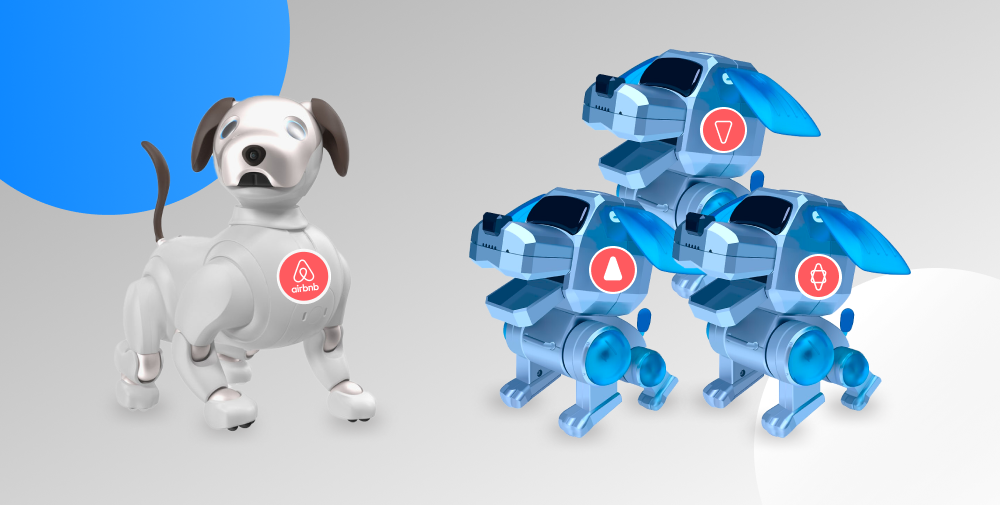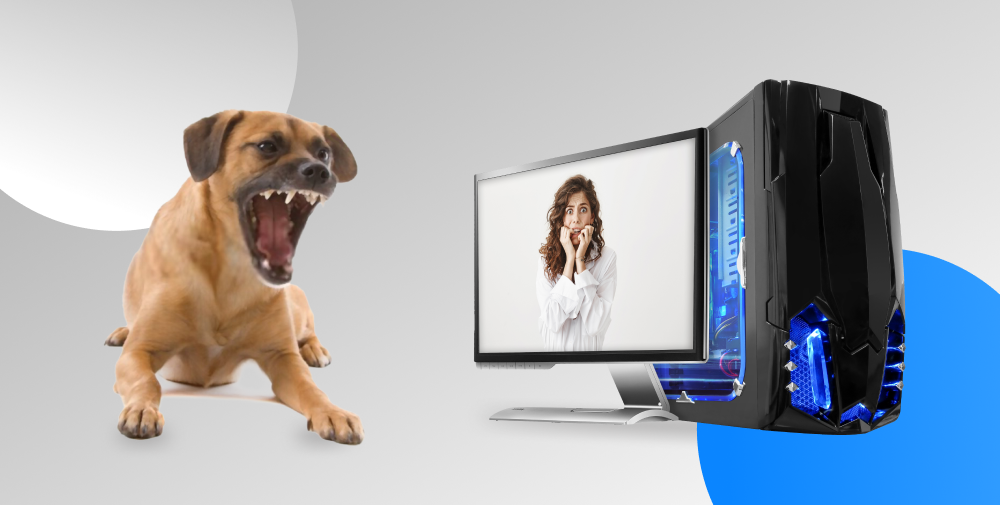Today, mobile apps are redefining every aspect of our lives, and a unique relevant idea for an app can be worth millions. However, without a well-thought-through protection strategy, there is a high risk of getting the idea stolen before you even manage to implement it, as well as a risk to get it copied by rivals once it’s proven to be successful. So, once you think "I have an idea for an app ", "how do I protect it?" should be your next question. If you are still unsure where to begin and what are the best ways to legally protect your new application, worry not, we have collected some tips for you in this post.
written by:
Andrey Kisel
Chief Information Security Officer, Qulix Systems
Today, mobile apps are redefining every aspect of our lives, and a unique relevant idea for an app can be worth millions. However, without a well-thought-through protection strategy, there is a high risk of getting the idea stolen before you even manage to implement it, as well as a risk to get it copied by rivals once it’s proven to be successful. So, once you think "I have an idea for an app ", "how do I protect it?" should be your next question. If you are still unsure where to begin and what are the best ways to legally protect your new application, worry not, we have collected some tips for you in this post.
Contents
Where to Start
Shopping, finance tracking, travel planning, dating, working out, studying, etc. — there is an app for everything these days. This is why the mobile application industry continues to grow even after being active for well over a decade. According to Statista, global mobile app revenues are predicted to generate over USD 935 billion in 2023, via paid downloads and in-app advertising.
At the same time, with such a vast amount of mobile apps available, it becomes fairly challenging to keep coming up with unique ideas that would add value to the users’ lives and become profitable. For this reason, there are a big number of clone apps on the market that earn money on someone else's idea and create additional competition, while decreasing the inventor’s revenues. When the famous Flappy Birds game was published, nearly one-third of all games released on the App Store in the next 24 hours were its clones. Every popular consumer app, such as Uber, Airbnb, Yelp, or Sephora, has been cloned, no matter the industry it operates in.
Therefore, to avoid someone launching your idea before you or cloning it after release, it is crucial to consider every possible strategy that would add an additional layer of legal protection to your mobile app. Even though there is no legal way to protect the idea on its own, there are various techniques for protecting the expression of it. Moreover, it needs to be done as early in the project as possible, as any delay can cost you the right over your concept.
10 Ways to Protect Your App Idea
If you have an idea you can’t risk getting stolen, but are not yet aware of how to protect it, here is the list of ten effective measures that you should consider.
1. Obtain a Patent
A patent is a property right given to the inventor for a certain period to exclude others from making, using, or selling their invention. The requirements for being eligible for a patent are quite stringent (and vary across countries), as the app must be valuable, original, and non-obvious, while it also cannot be created via the use of other already patented methods and technologies. A patent is also one of the most expensive protection types, however, once it is attained, it makes it impossible for anyone to steal any part of your invention without giving you some type of credit.
Even though patenting is not allowed for an abstract idea or the app’s code, it can be issued for the methods, processes, and mechanisms of the application that allow it to perform its function. Considering the tough requirements and the price, it is best to consult an attorney to evaluate the chances of getting the patent rights first.
As an alternative, it is also possible to first file a 12-month provisional patent application to secure a filing date, while completing the development process and making further improvements to your mobile app.
2. Claim Copyright Protection
As opposed to a patent, copyright is an easier and more cost-effective way to protect your intellectual property. However, similarly to a patent, it cannot be issued for the idea itself, but only for the app’s code, design, and user interface (UI). While copyright gives the exclusive legal right to reproduce, publish, sell, or distribute the original works of authorship, the downside is that it only gives protection against direct copiers, while still allowing someone to implement your idea as long as they are using different technologies for it.
Nevertheless, claiming copyright is essential for making the following items subject to legal protection:
- the app’s source code,
- the in-app content,
- the interface design, including characters and graphics.
3. Trademark Your App’s Name and Logo
The name and logo of the app are two strong indicators of the brand that allow users to recognize it, which is why protecting them from copying is as important as protecting the technology of the application. According to the definition given by Investopedia, “trademark refers to a recognizable insignia, phrase, word, or symbol that denotes a specific product and legally differentiates it from all other products of its kind”. It helps to restrict your competitors from using elements of your logo and, as a result, maintain your brand identity and build a stronger connection with the customers.
4. Sign a Non-Disclosure Agreement (NDA)
A non-disclosure agreement (an NDA or a confidentiality agreement) is “a legally binding contract that establishes a confidential relationship”. As app development is rarely a one-person job, signing an NDA is a vital step before starting to discuss your app idea with anyone — partners, vendors, developers, or any other involved parties. The NDA helps to protect confidential conversations during a certain meeting, trade secrets, app designs and features, processes, and other privileged knowledge, documentation, and correspondence from being leaked to any entity other than the ones authorized in the document.
5. Also Consider a Non-Compete Agreement (NCA)
Similar to the NDA, a non-compete agreement (NCA) serves the purpose of protecting your app idea from leaking, when you engage with a development partner, except it targets your rivals specifically. The contract limits everyone involved in your project from working on any other similar projects for competing companies for a specified period of time. However, as the NCA imposes significant limitations on a development company, for them to sign the agreement, it might be necessary to come up with a reasonable timeframe as well as negotiate some sort of reimbursement.
6. Reserve Your App Name
Once you have settled on the name for your mobile app, it is essential to reserve that name on the App Store and Google Play Store, as well as secure domain and social media names. On the iOS App Store, it is possible to submit your app name reservation in advance for an unlimited period, as of 2015. Meanwhile, even though Google Play allows different apps to have the same title, it still requires a unique app’s package name, which can also be easily reserved beforehand. Buying a domain name with different common extensions (.com, .net, .co, etc.), as well as checking social media channels that you are planning to use are two other ways to secure your brand strategy and make sure no copycats outpace you.
7. Document Everything
If someone tries to steal your idea and the case needs to be presented to the court, having a record of every step and every discussion related to your new app creation will appear invaluable. A record of a team meeting or a brainstorming session, a conversation on the internal communication tool (Skype, Slack, etc.), app’s code and design drafts, and the history of each fundamental step of the development process — each little detail is going to provide you with the support you need and serve as a proof that you came up with the idea first. Sometimes it might even help to find out which exact conversation has been leaked.
In addition, your data may be stored on a multitude of devices at the same time or on the one and only, so make sure the information stays safe in case any hardware fails. To put it simply, do not store your original project idea on a single memory stick since its loss may cause a huge blow to your business.
In doing so, encryption comes at help, among other things. Always encrypt your confidential information when it leaves the network using reliable software systems. Also, do not forget about backing up. As with anything else, backups should be stored safely so that servers are not visible to the public via the Internet and your data cannot be stolen.
Also, think about how you can prove your data integrity meaning, i.e. that these records are authentic and were not created later on artificially.
8. Find Trustworthy Partners
In case you are outsourcing the mobile app development process, first and foremost, it is essential to make sure that the technology service provider you picked is trustworthy. Pick only registered agencies who have a historical record and reputation and recognition on the market, as well as already established processes, protocols, and sensitive data protection policies. A background check also needs to be done for any other involved parties such as investors, consultants, and other contractors. At the end of the day, no matter how many protection strategies you set in place, it all starts with reliable partnerships.
9. Share Information Selectively
Even though it might seem like an obvious rule, many get inspired and neglect it when sharing their excitement with family, friends, and other people. However, once the idea is out there it is hard to keep control of who exactly it might reach and it can play against you. This is why it is best to not disclose the details until the app has been released with all feasible protection strategies in place. Even when it is necessary to share the idea such as in the case of pitching it to the investors and clients, however, it is always crucial to minimize the shared details to only necessary ones.
10. Do Not Delay the App Development Process and Keep It Safe
Finally, as most protection rights such as copyright can only be given to an actual functioning app and not the idea itself, once the idea is validated, it is best to start bringing it to life as soon as possible. There is no better way to secure the originality of and your ownership over the idea than to implement it. One of the best ways to do it as quickly as possible is by first releasing the Minimum Viable Product (MVP), which allows you to issue copyright and get an advantage on the market, while still keep improving your new app.
When the process is launched, keep your development environment secure. For some developers, a less constrained environment with administration or root level permissions will be needed but it may lead to elevating the risk of attacks. So you need to find a perfect balance between being flexible and being secure.
There are a variety of best practices that can be applied to securing your working development environment. Below are just a few examples:
- Limit the attack surface of the environment by applying, for example, the NCSC end-user device guidance.
- Safeguard credentials and secret keys by making the use of multi-factor authentication.
- Ensure your developers have the practical tooling they need so that don't have to look for workarounds.
- Exercise trust but verify your developers' actions via network monitoring, patch level checks, and software verification.
- Imagine there is a compromise and place extra controls to reduce the potential impact on products and services you offer.
Surely, the list is not exhaustive but we are sure you have grasped the idea.
If you are looking for a reliable partner to closely work with on the development of your application or have any more questions related to what are the best ways to protect your app idea, don’t hesitate to contact our Support Team or visit our home page.

Contacts
Feel free to get in touch with us! Use this contact form for an ASAP response.
Call us at +44 151 528 8015
E-mail us at request@qulix.com












